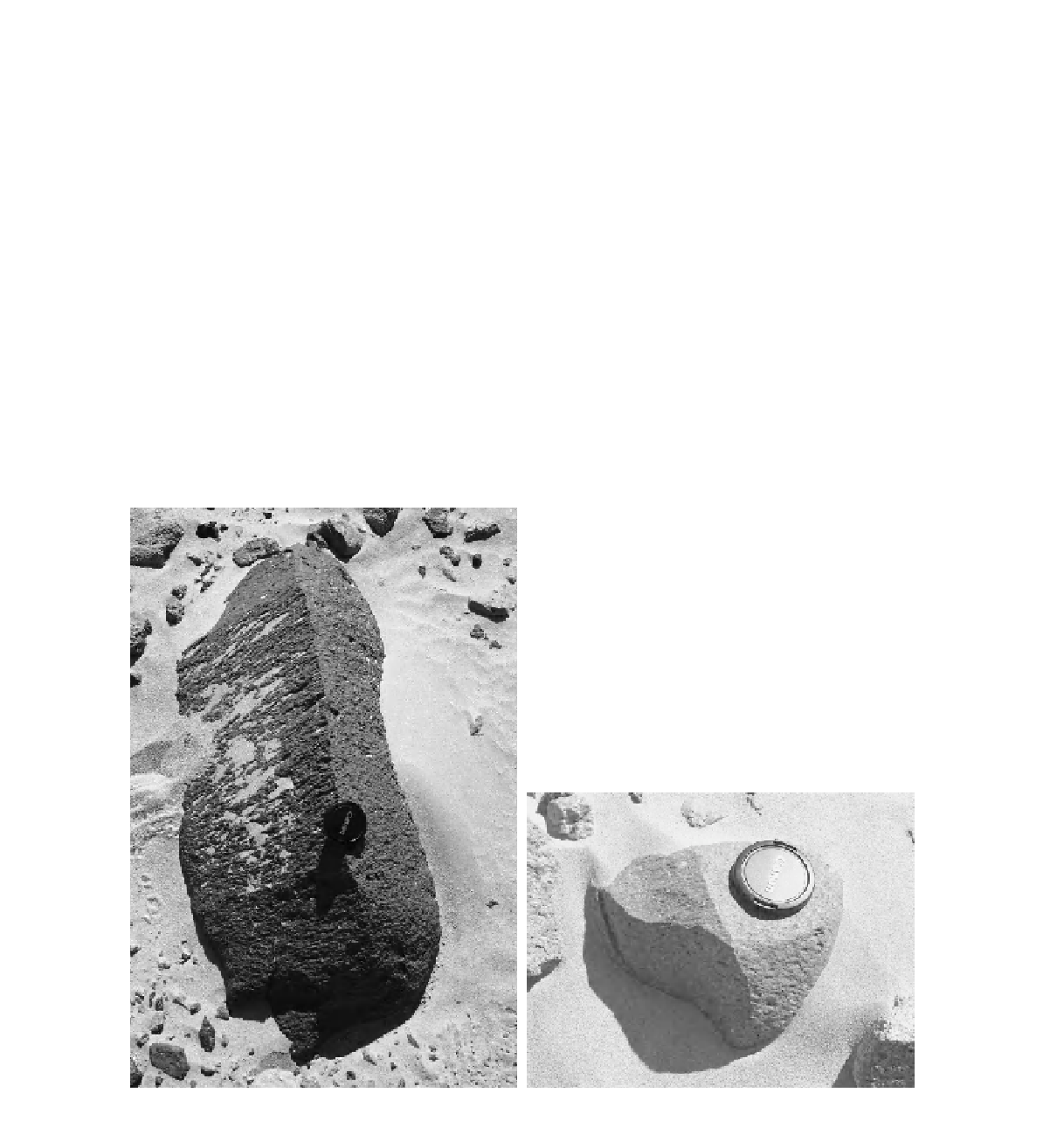Geoscience Reference
In-Depth Information
21.2.5.1
Erosional forms
to: (1) the shifting and overturning of the rock, particu-
larly if it is small, and (2) bidirectional or multidirectional
winds (Figure 21.10(b)). If the rock is large and stable, it
provides an excellent indicator of regional wind direction.
One of the more common features recorded for ven-
tifacts is smoothing and
polishing
of the rock surface,
both on the facets and within the flutes and grooves (Max-
son, 1940). The sheen on ventifacts in periglacial settings
may exceed that of glacial polish (Tremblay, 1961). The
retention of polish over time varies according to rock type
(Clark and Wilson, 1992). Although ventifact surfaces are
macroscopically smooth, scanning electron micrographs
(SEMs) at high magnifications reveal considerable topo-
graphic roughness and surfaces covered with microcrack-
ing or cleavage fractures formed by repeated chipping by
sand grains (Laity, 1995; Laity and Bridges, 2009). Af-
ter abrasion ceases, rock coatings such as silica glaze or
desert varnish may cover the surface (Dorn, 1995).
While small rocks usually have both polish and
facets, larger boulders are covered by additional features,
Unlike desert depressions or yardangs, which develop by
several interacting processes, usually involving both water
and wind, the sole mechanism of mass removal in ven-
tifacts is abrasion (although weathering in between ero-
sional episodes may alter surface characteristics). Abra-
sion has the potential to form one or more of several key
features on a ventifact, depending on the rock type and size
and duration of exposure: facets, polish (similar to glacial
polish) and features (pits, grooves, flutes and so on).
A
facet
is a planar surface that evolves at right an-
gles to the wind: ventifacts may develop more than one
facet, which often join along a sharp ridge or
keel
(Fig-
ure 21.10(a)). The number of keels (kante) has been
used to describe small ventifacts as einkante, zweikanter,
dreikanter (one-, two-, three-ridged) and so on (Bryan,
1931). Much early research was devoted to the morpho-
logical classification of ventifacts (Bryan, 1931; King,
1936; Czajka, 1972). Multiple facets develop in response
(a)
(b)
Figure 21.10
(a) Basalt ventifact with a single keel, formed by bidirectional wind flow in the Owens Valley, California. The
surface with the lower facet angle shows lineations perpendicular to the keel, whereas the higher angle facet is largely pitted.

